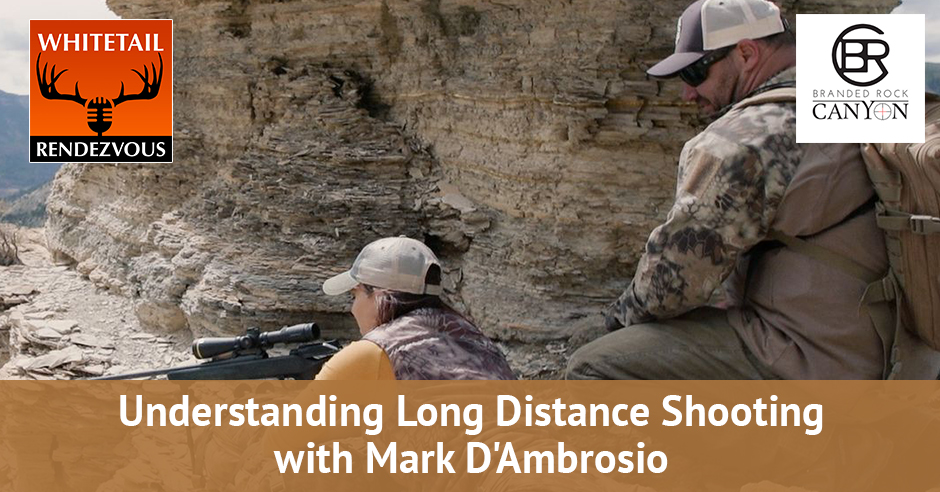
Mark D’Ambrosio, long-range shooting instructor at Branded Rock Canyon and former sniper in the Marine corps, provides his extensive LRS resume to help us understand what it really means when it comes to hunting. Mark shares his own journey and experiences coming into the hunting world, imparting lessons and advice that can make your next hunting successful. In particular, he speaks about the various requirements to be an effective LRS – from your gun set-up to your skills. He also talks about the ethical side of hunting, putting forward the humility required to assess whether you will only injure an animal or take them down in one hit.
—
Listen to the podcast here:
Understanding Long Distance Shooting with Mark D’Ambrosio
I have Mark D’Ambrosio. Mark is a special guy because he served our country as a sniper. He did things that other people will never have to be called to do. I wanted to thank you for that, Mark. He’s the long-range shooting instructor at Branded Rock Canyon ranch. That’s outside of De Beque, Colorado. Mark, welcome to the show. Let’s talk about how you got into the hunting world.
Thanks for having me. I started off in the hunting world when I was ten. I grew up in Florida and started hunting whitetails. I did it until I was about 22. When I joined the Marine Corps, I knew that I wanted to do something. I wanted to be a sniper. I knew that I wanted to be a Reconnaissance Marine, so I went straight into Reconnaissance. I was given a chance to try out. I had trained for a couple of years prior. I gained about 40 pounds in weight and I got rocking around with a lot of weight on my back. When I joined, I made it into the Reconnaissance battalions and then I went to Scout Sniper school shortly after that.
From there, I learned all these fields craft and bushcraft skills. You also learn how to operate as a small team and with that you’re learning things like tracking and survival. The sniper, you’re learning the long-range shooting. More importantly, you learn skills like stalking and fieldcraft and things that are the dying skill set nowadays. Fewer and fewer people have these skill sets. I love doing that type of mission. I love going out and being a sniper. In 2012, I went to the Marine Corps Mountain Warfare Training Center in Bridgeport, California. I instructed the mountain high angle sniper course and the mountain survival of course. That’s where I got a passion for instructing.
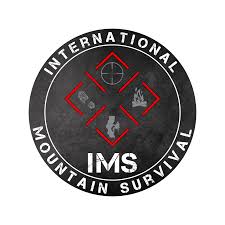
I love being able to take the information and the knowledge and pass it on to other people. I was instructing everyone and all special operation branches in the DOD as well as internationally. Law enforcement as well would come up to our course. From there, I went to the second Recon. I ended up getting out of the Marine Corps after about a few years. I started up a business where I was teaching individuals long-range shooting survival, mountaineering and tracking. A little more than a year ago, Amy contacted me with Branded Rock Canyon. She asked me to come up there and take a look at the place and if I’d be interested in instructing up there for them from the months of about April to August.
When they weren’t doing their elk and mule deer hunts, then we’d be teaching courses. We made a video going up there and being able to show people the capabilities of Branded Rock Canyon. When I first went there, I was blown away because of the terrain. When we’re talking about realistic shooting and training for hunting situations, this place has got it all. I went up there and I’ve been working with them ever since. We’re doing long-range hunter courses. We also do three-gun courses, long-range courses and we do some survival stuff up there too. We prepare the hunter for any situation they may come across.
Amy Martin Shaffer was a world-class Olympic scholar. She did participate in the Olympics. She also ran ProHunt Concierge where she made it possible for people to hunt all around the world as well as herself. She had hunted all around the world. When you go to Branded Rock Canyon, you’re dealing with a lady that’s been there, done that in a lot of different levels. The thing I love best about Amy is that she’s a wonderful human being. You can’t ask for a better human being. I wish her all the success at Branded Rock Canyon because I’ve been there when it was Kessler Canyon. I’ve been on the ground and it’s a world-class five-star facility.
I went to a sheep show with them and talk about knowing everyone in the hunting world. She knows them. Her personality and who she is as a person, and her husband, both are amazing people. It’s a lot of fun going out there and working with people of these qualities.
Did you meet Bryan at the sheep show?
I did meet Bryan. I spent about 30 minutes talking to him. It’s funny because we were both so busy, but we couldn’t stop talking about guns and shooting.
Bryan runs Asian Mountain Outfitters. If you want to go to the stands and go after Marco Polo, Bryan is the foremost outfitter to do that in the world. I’m gushing because they’re world-class people and I count them as personal friends. Mark is part of that outfitter. Let’s turn it back to you, Mark. You told me that you started hunting whitetails down in Florida at ten years old. Let’s talk about the lessons learned there as it’s turned out into a career path for you.
Hunting whitetails in Florida is a little bit different than hunting whitetails in some other spots within the country. As far as distance shooting, your average shots were about anything from 50 to 150 yards. One hundred seventy-five yards is a long way when we are talking about the shooting. Back in Florida, if you’re shooting 200 yards to 300 yards, that’s an accomplishment. I grew up with that mindset that 200 to 300 yards is a long way away. I joined the military and we were shooting 500 yards with open sights. I was using an optic shooting out to 300 yards and I was shooting 500 yards with open sights when I first joined. We moved to the RCO and stuff like that. It enhances your ability to shoot further using optics. When I went to sniper school, we were using a three to twelve-power optic and we were pushing out to 1,000 meters, about 1,100 yards. Growing up in Florida, I was hunting whitetail. I would call it close ranges. Anything where you don’t have to do a holdover depending on what caliber you’re shooting. You don’t have to do a holdover on your target in order to hit it. It’s a close range.
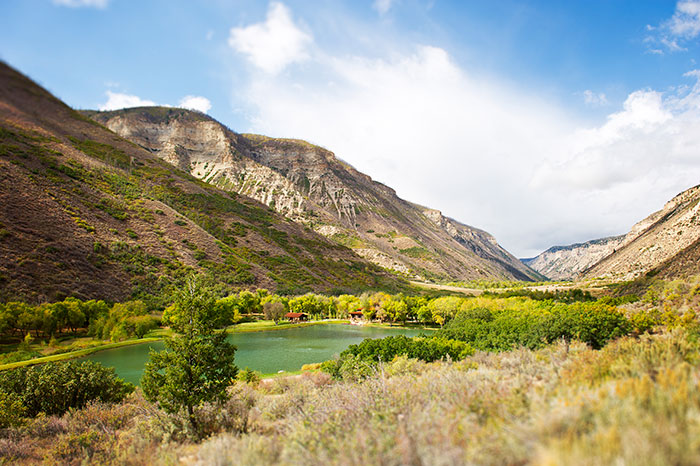
When we start pushing out past that where we have to know what we have to do on our scope or where we have to hold with our reticle. That’s when we start talking, “We’re pushing into the medium-range distances and in the long-range.” I got into that by hunting whitetail. When I moved to Bridgeport, California to instruct the high angle course, I started hunting a lot of mule deer out in the Sierra Nevada’s. That’s when the game for the hunting world changed. I went from maybe a power line in Florida that you can get out to 200 to 300 meters. You could be hunting from ridgeline to ridgeline or from on top of a ridge down into a draw. We’re talking 400 to 600 yards. That’s a big difference when you’re talking about a moving animal and depending on what size of the animal you’re shooting.
You might be thinking why I’m having a long-range person on the show. Long-range shooting is a thing that people are doing. Best of the West builds guns as many gun makers that are on TV making 1,000-yard shots. Many shots are set up and all the person does is pull the trigger. They build the gun, they build the rounds, they set the trigger, they do everything for the gun and then they set up the gun and shoot. There’s a lot of different information about the long-range shooting. That’s why I was excited to have Mark on. Aside from that, Mark was at Branded Rock Canyon and he jumped in the pond.
In the middle of the winter, it’s below 32 degrees. He’s got a full pack on and he’s doing some survival skills. I looked at that and I said, “I’ve got to talk to this guy because it’s crazy to do that if you’ve ever fallen through the ice.” Unfortunately, I did that once and I’m still alive, so it worked out fine. Those are the skills that you need to know because if you’re in the backcountry and you’re up against it, there are some things that you need to have the skill sets to get out of a death threatening type of thing. I was motivated to get ahold of Mark. We did and we got him on the show. Mark, let’s go to the definition of long-range shooting in your mind.
When we’re talking long-range, it’s different in which category we’re shooting in. If we’re shooting competition, long-range is different than if we’re in the hunting world. If we’re a law enforcement sniper versus a military sniper, long-range is extremely different because with law enforcement, I have to hit this person in an immediate incapacitation area. With the military, I need to stop the threat. I don’t have as many parameters around where I have to hit. If I hit somebody in a military situation with a round, it’s going to put him out of the fight more than likely. It’s going to make them less effective. In law enforcement, that’s not a thing. When we start talking about the hunting world, long-range hunting I’d compare it more to the law enforcement long-range side whereas you have to be more precise and more accurate. You don’t have the ability to hit this animal outside of the kill zone.
We’ve advanced in technology with laser rangefinders and knowing the exact distance with our optics and our guns. It’s the ability to buy a rifle right off the rack and shoot 1,000 to 1,500 yards depending on what caliber you’re getting. Long-range is not that simple. We can’t go out there with the mindset that we’re going to go out there and shoot a mule deer. We’re not going to go out there and shoot a ten-inch plate at 1,000 yards every single time. We know that we’re going to hit it inside those ten inches. We can’t say that for sure if we have eight to ten gusting mile-an-hour wind if we’re in a canyon, terrain features. Long-range maybe 600 yards and 1,000 yards is out of the question because you’re not certain you’re going to be able to hit in there. If we’re shooting and we can’t get the first-round impact on an animal in the kill zone, then we failed because we’re shooting or injuring animals.
Long-range depends on the conditions. It depends on caliber selection. It depends on your skills as a shooter, not only on being able to pull that trigger but being able to call wind. Long-range may be in perfect situations. If you’re down to the draw in the morning time, there’s little wind. If you have the ability to shoot in the similar terrain, you’re not shooting across the canyon, but you can read wind off the ground-based off of a mirage or the plant life that’s going on, then you may be able to take a 1,000-yard shot. Let’s say we’re up on this ridgeline and it’s the middle of the afternoon and it’s getting late towards the evening, the winds are shifting. I can only feel the wind at my position. I look down across this canyon to the other finger that we’re shooting onto. The animal’s on another finger. If we’re shooting from ridgeline to ridgeline from finger to finger and I can’t read the wind in the middle, that’s a risky shot.
I’ve seen a lot of shots on YouTube that concern me where guys are having these nice expensive guns built and they have the ability to shoot that far, yet their shots don’t hit the first time. They correct it and then they hit the animal in the second shot. That’s fine when they miss and then they hit the animal. If we’re shooting something that is not going to get wounded, that’s fine. Whenever I see that and I see a second shot on an animal, I see that as a failure and that person shouldn’t have taken that shot, to begin with. That person was outside of their long-range abilities when it comes to hunting. With long-range, there are times when you can shoot 1,000 meters on an animal. There are also times when 500 meters is long-range and a lot of guys are like, “500 meters, that’s nothing. I could shoot 500 meters at twenty-mile-an-hour wind,” but the ability to be able to call wind is something that no one’s perfect at.
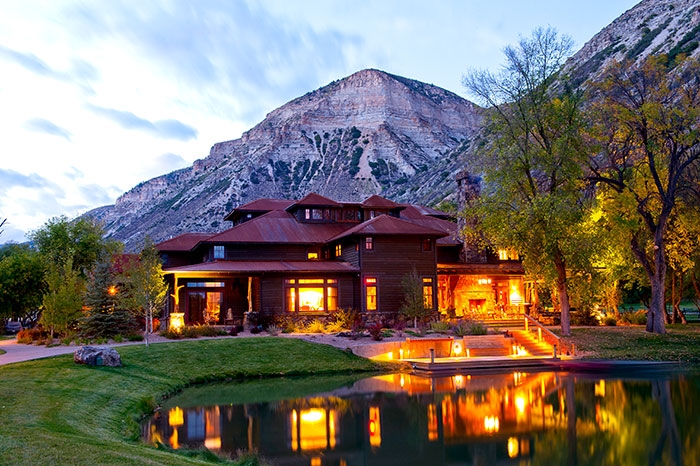
What is the biggest determining factor on where your round is going to go if it’s a heavy wind or the most unpredictable because it’s constantly changing? What I look at a long-range shooter and their abilities on how good they are is how well they can call wind and bring it on the target. There are a lot of different ballistic solvers out there these days. We don’t even need ballistic solvers. We could gather data. There’s so much technology as far as the elevation of our round and how to predict that and that’s not the hard part. The hard part is reading the wind. As far as long-range shooting is concerned, it all depends on the environment, your gun’s set up, your skills as a shooter and reading the wind.
Firing solutions and doping the wind, those are two things that I’ve learned for my personal kills. I remember I shot across the canyon and I took out a shoulder on a goat. If you ever hunted mountain goats, they’re tough and a snob. His shoulder was gone, yet he’s still walking away. I hit him again and he went down and then we got him. I was thinking, “My first shot was a failure. It was at 440 yards across the canyon.” It was a quiet wind and everything, but I had exceeded. I was shooting in a 165 bullet at 2,800 feet per second. I thought I had the ballistics all ranged in, but I was off. I wasn’t using a ballistic scope so I couldn’t click it in. I had to do some holdover in my own mind because of the distance. I was thinking of that. I hit him. Would he have died? Yes, there’s no question about it, but I like to put things down. The thing I wanted to bring out about the long-range shooting is it’s your responsibility when you pull the trigger to ethically put that game down with one shot or don’t take the shot. That’s my whole axiom on long-range shooting.
You either take that game down with one shot or don’t shoot at all. Share on XThat’s a common misconception out there. When people hear me say I like long-range hunting, they think I’m out there shooting past distances that are unethical. That’s not the case at all. You’ve got to be able to determine what long-range is for your capabilities. You’ve got to be humble enough to be able to stop and say, “No, I can’t take this shot.”
Be humble enough to be able to stop and determine whether you can take that shot or not. Share on XIs doping the wind a correct statement or is that something holdover from years gone by?
I wouldn’t say doping the wind. I guess you could, but DOPE stands for Data of Previous Engagement. You’re learning from each and every shot. I wouldn’t say doping the wind but reading the wind. Dialing for wind is what a lot of people will say.
I talked about being in situations on the farm. I hunt every fall. I can take up the 300-yard shots and it’s across the valley. I found that in the morning, I’m a lot more effective or a lot more confident than I am while in the afternoon. If I’m in all day sit and it’s gun season, then I’m shooting does that are coming off the farm across the pastures and there’s a valley between us. I’m confident until the wind comes up, then I get a little edgy because I have missed the deer. I’ve flat out missed and going, “What am I missing?”
Getting good at long-range shooting means you’re getting good at calling wind. Anybody can get behind the gun and learn how to pull the trigger. Let’s say we’re shooting flat terrain in Florida. Let’s say we’ve got a power line and we’re shooting out to 1,000 meters. Normally, you can’t shoot out that far in a place like Florida, but we’re shooting down power lines and we need to make multiple wind calls. Depending on if we have roads cutting across, the flight of our projectile or maybe we’ve got some open tree lines in between. We’ve got to be able to read the wind and what it’s doing for yourself. Not only at your position at the target, but then also in between. Depending on how far out you’re shooting. It depends on how much different wind calls you’re going to have to make. You have to add and subtract and do the math.
A wind call is going to work for that range with all the multiple different winds going on. If we can look on a flat range and we can tell that the wind is going to do something specific at each 0 to 300, 300 to 700 and 700 to 1,000, we can account for that and that’s easy. You take that same shooter and you put him up in the mountains. We’re shooting from one ridgeline to the next ridgeline or one ridgeline down into a draw. You’re able to read the wind yourself and you’re able to read the wind at the target, but you’re not able to read the wind in between unless you have a terrain feature in between.
I’m shooting from the ridge top and the animal is down in the bottom of the canyon. He doesn’t know that I’m there, so he’s calm. He’s not all spooked or anything. It’s a calmed animal. That’s one thing that I’ve found. I don’t want to shoot 300 to 400 yards at a disturbed animal. If they’re not calm and hanging out, then I don’t want to shoot at them. That’s personal. Other people go, “You can do that.” What’s your thought on that before we go to the actual setup?
A calm animal’s a more predictable animal. When we start talking about taking a long-range shot on an animal that we don’t know whether or not he’s going to take one step forward or turn around or swing his head in the wrong direction, we may be having round hit somewhere in the face. When we’re talking about shooting at these ranges at past 400 or 500 yards, most of them are calm unless you were heinous getting them into position. At that range, you’d have to be lacking all stalking skills, field skills, slow movement and camouflage in order to spook that animal. Even with the winds and your scent pushed down to the animal, that’s far away for them to get spooked quickly.
I’m on a ridge and there’s a bull elk down at the bottom. It’s a steep 800 yards and it’s in downhill. What do you consider a steep angle for shooting?
High angle is anything above 30 degrees.
It’s a bull elk at 800-yard at a high angle. You can throw in the variables.
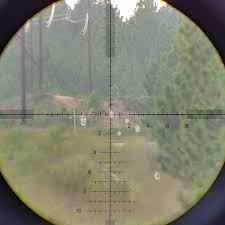 If we’re taking a shot and we’re taking a 30-degree angle shot down at 800 yards on a bull elk, that’s a steep shot. Let’s say we’re taking a seventeen-degree angle shot on a bull elk at 800 yards for reading the wind. I’ve got to be able to take the terrain into consideration, but I have to be able to know how and when he moves across terrain features and when he moves a lot like water moves if we think of it like that. I have to be able to know what wind does in the morning and what wind does in the evening. You’ve got your anabatic winds in the morning that are coming uphill and you’ve got your katabatic winds in the evenings that are going downhill. These are things we have to take into consideration because we can assume that this is what’s happening. I have to be able to know what that means because there are anabatic and katabatic winds and they don’t realize that that’s on a major terrain feature and you may not be placed on a major terrain feature.
If we’re taking a shot and we’re taking a 30-degree angle shot down at 800 yards on a bull elk, that’s a steep shot. Let’s say we’re taking a seventeen-degree angle shot on a bull elk at 800 yards for reading the wind. I’ve got to be able to take the terrain into consideration, but I have to be able to know how and when he moves across terrain features and when he moves a lot like water moves if we think of it like that. I have to be able to know what wind does in the morning and what wind does in the evening. You’ve got your anabatic winds in the morning that are coming uphill and you’ve got your katabatic winds in the evenings that are going downhill. These are things we have to take into consideration because we can assume that this is what’s happening. I have to be able to know what that means because there are anabatic and katabatic winds and they don’t realize that that’s on a major terrain feature and you may not be placed on a major terrain feature.
When reading wind for this particular bull elk that’s far away, I’ve got to be able to take that into consideration. Is it four miles an hour gusting six? Is it in my position? Is it doing the same thing down there as a target? If it’s doing the same thing as a target in my position, then I’m comfortable making a shot like that. I also have to take into consideration the flight path of my bullet. Where my bullets are going is not where I’m able to read wind usually. On an 800-yard target, my bullet is flying higher than I can read wind, especially in terrain like I’m talking about now. The higher we go, usually we’ll notice that the wind starts picking up a little bit because there are not as many terrain features blocking it, but that all depends. If we’re taking a shot on 800-yard elk and we’ve got a twenty-inch diameter on this animal and seventeen degrees. We’re reading the wind at our position. We’re reading the wind at the target or looking in between. If we can and we have a hillside off to the left or the right and we can read wind off the top of that hillside, maybe this is where our projectiles line.
I’ll look all the way to the right and I’ll read that wind. You’re taking as many of these considerations into play. If it’s in the morning and we’ve got some heavy winds at 800 yards, we may not be able to make that shot in this specific situation. We may go ahead and move over from this ridgeline, come down and get it to within about 500 and then take the shot. If we were taking that 30-degree angle shot, that’s when I can read the wind a little bit easier because of what’s coming off the slopes and how close I am to the slope, specifically. I may have some brush that I can read the wind off of. A lot of times, you’re dealing with things like these piñon pines and this artemisia or sagebrush. Sagebrush doesn’t move when the wind blows. We’re talking about a plant that has evolved over thousands of years to deal with heavy winds. When we’re talking about shooting over here in the west and we’re dealing with sagebrush, that’s a hard place to try and utilize for reading the wind. We have to go off of mirage.
If there are some indicators out there, we’ve got to learn what those indicators are. If I see sagebrush moving, that means the wind is hooking it. You can tell right then and there. You may be in a position where you’re up on a hill and you don’t feel any wind. If you don’t take the time to look down at your target or look at this hillside to the left or the right if you have one, then you may not realize that it’s a ten to fifteen-mile-an-hour gust coming through there. You’re not going to be anywhere close to your target. Reading wind is an art form, but it’s a skill learned. No matter what, it’s always an estimated guess. It’s your best estimate to guess what the wind is doing at that moment.
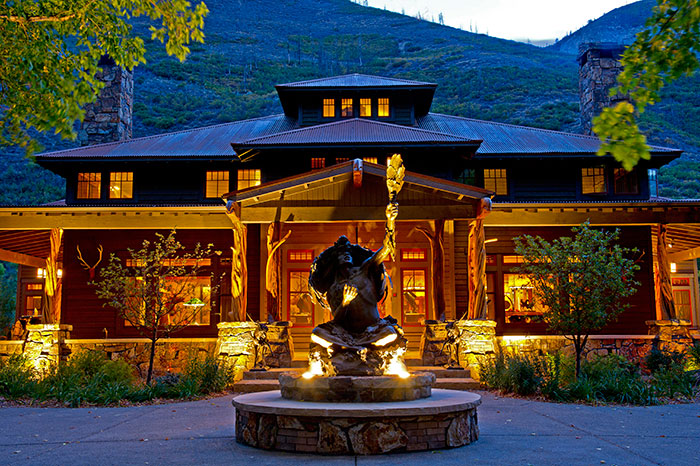
From the second that the bullet leaves the muzzle to the animal, it’s doing something different or it could be doing something different. We have to be able to get as close as possible and we’re talking within. Sometimes when we’re shooting long-range within one-mile-an-hour, we have to call that wind in order to hit the target and kill them. That’s not always the case. If we’re shooting at 500 meters, we can be off a little bit more with our wind. What we always want to shoot for is within one-mile-an-hour as far as our capabilities. There are very few people that can read wind within one-mile-an-hour. I would say that it’s one of the hardest things to be able to do at 100%.
The biggest thing I picked up is you’ve got to have excellent optics and not to shoot the animal, but to read the wind. By doing that, then you’re going to be far ahead. You should have a notebook. Do you have a notebook with you so you can write all this stuff down?
Yeah, absolutely.
Don’t try to do it in your brain and figure it out.
While you’re out there, you have this notebook with you and you’re taking those down, you’re jotting down what’s the wind doing all the time. If you’re looking down, you may not even see your animal yet. You may not see anything all day, but you’re noting what the wind is doing. While you’re moving, what’s the wind doing on these certain terrain features? Writing things down is imperative.
If you’re going to go into the long-distance shooting arena, you have to do that because it’s that critical. It comes back to when you pull the trigger. You want that elk, deer, antelope, sheep, goat or whatever you’re shooting long distance to die. You want to put that bullet, whatever caliber of choice, whatever gun you’d set up. Everything comes down to you squeezing the trigger. We’re going to talk about handling the trigger net. My thing is to read the wind and then your shot because you get all the ballistics. Everybody can figure out the angles and what gravity is going to do with your bullet and everything. We’ve got to squeeze the trigger. Talk to me about squeezing the trigger effectively, efficiently and correctly for long distance shooting.
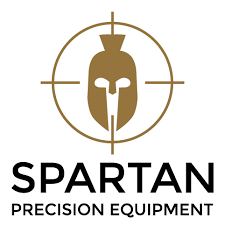
When we’re talking about squeezing the trigger, that means we already have a solid position. The buttstocks and their correct spot in our shoulder, we’re able to load our weapon in some way, shape or form. If we’re shooting a weapon system, it’s got a lot of recoil. Let’s say our position is solid and we have a great position. Our head is on the gun the same way each and every time. There’s a checklist going from the muzzle of your weapon system to your feet where you’re checking everything. You go through that checklist and you’re like, “Everything is good.” My cant, my elevation, my charge, it comes down to you pulling that trigger. We’re thinking about, “We’ve got to concentrate on our breathing. We’ve got to get our heart rate to where it’s not jumping all around.” We want to be as relaxed as possible. We want to have bone support in our position and muscular relaxation.
When it comes to pulling the trigger and we put our pad on that trigger and we’re pulling it to the rear, that reticle should be exactly where we want it. By the time that I pull the trigger and it breaks, I have followed through. With follow through I mean I pulled the trigger and I hold it to the rear. I’m not slapping the trigger. I’m not honing it and then take my finger off. I’m pulling it, I feel the shot break and I watch my reticle fall back onto the target. If I wanted to rack my bolt or reset with a long-range semi-automatic gun, then I could. With trigger reset and pulling the trigger, it’s common nowadays that you’ll breathe in, you’ll breathe out and at the end of it you exhale. Before three to five seconds or before your heart starts picking up, you want to go ahead and pull that trigger. You wanted to depress it.
Once you depress it, you have follow through. You watch your crosshairs fall back onto the target and if you can, you watch where your bullet impacts. Without the proper position behind the gun, you’re not going to be able to do that because your gun is going to recoil. It’s going to jump somewhere else and you’re going to have to try and locate your target again. By that time, your rounds have already hit the target and it’s missed, or you don’t know where it’s impacted. You may have hit it and you don’t know where it impacted. For pulling the trigger, the breathing comes into play and then follow through with what you’re doing with your trigger finger and also your reticle.
Some people try to shoot when their heart is beating. They squeeze the trigger between heartbeats.
I’ve never done that in my life. You can, but the type of shooting I’ve always done is more realistic shooting where I’m not sitting on a range and I have that time to do that. It’s more snapshots. You’ve got a chance to get in position and shoot this animal or you’ve got a chance to get in position and take the shot. I’ve got too many other things I’m paying attention to other than my heart rate. I do want to be calm, but that’s not something relevant. I haven’t heard too many people teach that anymore.
What’s your sequence again on squeezing the trigger? Everything is aligned and you’re going to take the shot.
I’ll take my position, I’ll run through my checklist while I’m on my position. From there, I’ll make sure that my elevation is either set on my charge correctly or I’m holding correctly in my optic. I’ll go elevation and then I’ll look at my parallax knob if my optic has a parallax knob on the side. After I checked my parallax, I’ll check to make sure the cant of the weapon system, my reticle is even with earth. That’s when having a level on your gun is important. With a lot of shooting in the mountains, you have to have a level in your gun. It’s something that a lot of people don’t do.
I’ll check my cant and making sure my gun is level, and then from there I’m going to go ahead and start reading the wind. Either I can dial wind or I can hold the wind. A lot of times people are holding wind based off the reticles they have in their optics these days. We come to pulling the trigger. We’ve done our entire checklist, we’ve read the wind, we’ve made a wind call and we’re going to pull the trigger. I breathe in, I breathe out however many times I need to get relaxed. I close my eyes, I open my eyes trying to get a natural point of aim and then I go ahead. I pull the trigger to the rear as slowly as possible until it breaks. It should always surprise you. If the shot breaks, you’ll hold that trigger to the rear, you watch your reticle fall back into the target and then you can go ahead and reset or rack your bolt.
Hunters have to pretty much do the math to come up with a wind call that is going to work for that range. Share on XThat’s a lot of instruction. What are your courses at Branded Rock Canyon? What do you charge for your courses?
The courses are $1,800 per person per day. This is where luxury meets long-range shooting 100%. When we go out there and we do this instruction, you’re getting the world-class instruction, but mixed with the world-class accommodations. When they go in, they pick you up from the airport and they’ll drive you to Branded Rock Canyon. You’re paying for an amazing experience. When I first went to Branded Rock and I got to the driveway, that’s where my eyes opened up. I was like, “Where has this place been in my entire life?” It’s about a four-mile long driveway until you get down to the actual lodge itself. The scenery and the location you’re in are insane. I like saying that they’re a seven-star.
I do a lot of work in the GCC sub-countries selling sniper and Reconnaissance products as well and they’ve got seven-star hotels. I never knew about this. I’m like, “What is a seven-star hotel?” Apparently, a seven-star hotel spits gold out at you when you put in your credit card. Since they’ve gotten that, I like comparing Branded Rock Canyon to a seven-star because this is an experience that you can’t get in many other places. None that I know of. You can’t get this type of luxury with the terrain, the views and the shooting that we’re doing.
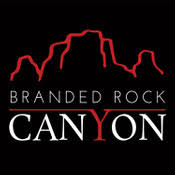
It’s one thing to be able to take a shooting course on a flat range. It’s another thing to be able to take a shooting course in the terrain that mimics what you’ll be hunting in. When we’re doing that, we’re learning, “Our positions are huge. Are we shooting up? Are we shooting down?” All the animals out there, they’ve got about every single animal around the world, a life-size AR500 half-inch thick steel targets. What I love about it is most of them have the flapper plates for the kill zone. I can say, “If that flapper plate didn’t move, then that was a fail.” Going up there and shooting from the terrain that you’ll be shooting from on targets that are realistic in nature, we’ve got robotic 3D targets that we’ll bring out there and targets that are moving.
We have a ten-inch plate that maybe at a light walk is moving towards us, which is realistic or maybe moving away from us. The reality behind the training is what sets it apart. That’s where we start getting into $1,800 per person per day. It’s an exclusive branch. If anybody wants to come and attend the training, they can. Once they get to know you and everything and you want to go out there and you want to do a hunt, then that’s they get to know you and that’s how you get into doing the elk hunts out there.
How does somebody get ahold of Branded Rock Canyon?
Look up their website online at BrandedRockCanyon.com. They’re on Instagram, @BrandedRockCanyon. Either one of those methods will work. They could follow my Instagram, which is @IMS_Sniper_Cadre. All my stuff is linked to Branded Rock Canyon as well.
Since I’ve been at the facility when Branded was on a different name, the accommodation, the food, shelter and everything that you have is worth more than $500 a day, any place in the world.
They bring in a five-star chef that’s amazing.
The point I’m trying to make here, Mark, is that if you look at any long-distance shooting course, they may be in the marketplace that is $500 to $1,000 a day of the shooting courses. Correct me if I’m wrong and reach out to me at WhitetailRendezvous@Gmail.com and say, “Bruce, I can go to Utah and spend $1,000 for three days,” but you’re not going to have that accommodation. I guarantee you that.
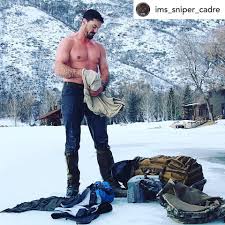 I do courses through my own business and they’re cheap. We’re talking $250 per person per day. You don’t get anywhere near the experience that you get when you shoot it out at Branded Rock Canyon. I don’t have the terrain they have out there. I don’t have the target shooting that they have out there. There are courses out there that are cheap and you can tell the difference immediately. This is more for a person who wants to go and do a shooting course and maybe take themselves or their family or their wives and they want to be taken care of while they’re there. They don’t want to have any worries. They don’t want to have to find accommodations that are going to meet their standards. They don’t want to have to find accommodations that are going to have food that is going to meet their standards. There are zero issues with that there.
I do courses through my own business and they’re cheap. We’re talking $250 per person per day. You don’t get anywhere near the experience that you get when you shoot it out at Branded Rock Canyon. I don’t have the terrain they have out there. I don’t have the target shooting that they have out there. There are courses out there that are cheap and you can tell the difference immediately. This is more for a person who wants to go and do a shooting course and maybe take themselves or their family or their wives and they want to be taken care of while they’re there. They don’t want to have any worries. They don’t want to have to find accommodations that are going to meet their standards. They don’t want to have to find accommodations that are going to have food that is going to meet their standards. There are zero issues with that there.
The closest airport is Grand Junction. It’s 60 miles away. Mark, thank you so much. I want to have you back. Will you commit to coming back again?
Yeah. I had a great time.
I want to talk about canting because I’ve been fortunate to hunt a lot and it took me a while to figure out that I have to have a level on my gun or I’m going to miss shots in the mountains. I’m not talking anything over 400 yards. It’s that critical. Canting is something that a lot of people don’t think about. It impacts any shot you make with a rifle. What are your thoughts on that?
For every five degrees you have in your weapon system of cant, you’re going to miss the target by about 0.1 mils for every 100 meters. That’s going to be in that direction and low, so that’s huge. Five degrees is nothing. When you start talking about 2.5 degrees. If I’m looking at a target of 1,000 meters at 2.5 degrees, that means I’m going to miss it by 0.5 mils. Twenty inches wide is about 0.4 mils wide. I don’t know the exact math, about 1,000 meters, about 0.4 miles wide. If I’m missing off by 0.5 mils from a 2.5-degree cant, that’s huge.
You’re not going to hit an elk.
You’ll miss.
I’m excited to have Mark back because we’re going to go from muzzle to the butt of the stock. That’s what we’re going to talk about the next show. Mark, this has been great.
Thanks again for having me on.
Important Links:
- Mark D’Ambrosio
- Branded Rock Canyon
- ProHunt Concierge
- Asian Mountain Outfitters
- @BrandedRockCanyon – Branded Rock Canyon’s Instagram page
- @IMS_Sniper_Cadre – Mark D’Ambrosio’s Instagram page
- WhitetailRendezvous@Gmail.com
- https://BrandedRockCanyon.com/Shooting-Program
- https://BrandedRockCanyon.com/
- https://www.Facebook.com/BrandedRockCanyon/
- https://www.IntSurvival.com/Call-Us-Now
- https://Vimeo.com/302915052
About Mark D’Ambrosio
 Mark defines Long Range Shooting, provides his extensive LRS resume and speaks to reading the wind. He keys in on the core of LRS success “ability to read the wind between you and your target”. The interview covers the various requirements to be an effective LRS. We also introduce his base of training operations at Branded Rock Canyon managed by Ms. Amy Martin Shaffer. PRECISION HUNTER TRAINING at Branded Rock Canyon – Designed for hunters, by hunters, our Precision Hunter Training courses will prepare you to be the ultimate mountain hunter, confident in your ability to find, engage, and make that crucial and ethical shot. Course curriculum includes equipment selection and maintenance, ballistics, observation and concealment techniques, learning improvised shooting positions, and overcoming dynamic field conditions and extreme shot angles. Shooters will be coached by the most experienced instructors in the industry and presented with real-world hunting & shooting scenarios, angles, and obstacles on life-sized steel wildlife and moving targets at distances out to 2000+ yards. Mark also shares the critical skill of tracking for the LRS with International Mountain Survival has teamed up with the best in the industry to bring the world the best instruction out there, whether that be a primitive survival course hunting elk using atlatls with Donny Dust, learning tracking techniques from the master Freddy Osuna or conducting a high angle long range sniper package for your department with Mark D’Ambrosio. If your looking for a long range guided hunt, we have teamed up with Branded Rock Canyon in order to facilitate those desires. Working together we have the ability to get you into the class/hunt/experience that is right for you.
Mark defines Long Range Shooting, provides his extensive LRS resume and speaks to reading the wind. He keys in on the core of LRS success “ability to read the wind between you and your target”. The interview covers the various requirements to be an effective LRS. We also introduce his base of training operations at Branded Rock Canyon managed by Ms. Amy Martin Shaffer. PRECISION HUNTER TRAINING at Branded Rock Canyon – Designed for hunters, by hunters, our Precision Hunter Training courses will prepare you to be the ultimate mountain hunter, confident in your ability to find, engage, and make that crucial and ethical shot. Course curriculum includes equipment selection and maintenance, ballistics, observation and concealment techniques, learning improvised shooting positions, and overcoming dynamic field conditions and extreme shot angles. Shooters will be coached by the most experienced instructors in the industry and presented with real-world hunting & shooting scenarios, angles, and obstacles on life-sized steel wildlife and moving targets at distances out to 2000+ yards. Mark also shares the critical skill of tracking for the LRS with International Mountain Survival has teamed up with the best in the industry to bring the world the best instruction out there, whether that be a primitive survival course hunting elk using atlatls with Donny Dust, learning tracking techniques from the master Freddy Osuna or conducting a high angle long range sniper package for your department with Mark D’Ambrosio. If your looking for a long range guided hunt, we have teamed up with Branded Rock Canyon in order to facilitate those desires. Working together we have the ability to get you into the class/hunt/experience that is right for you.
